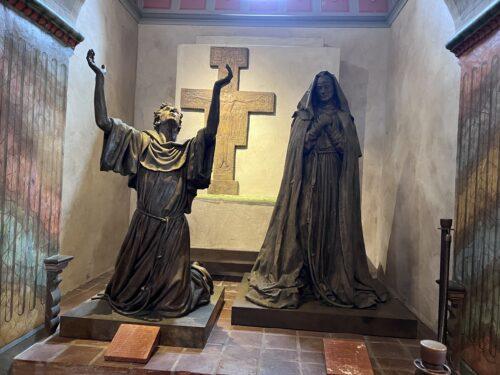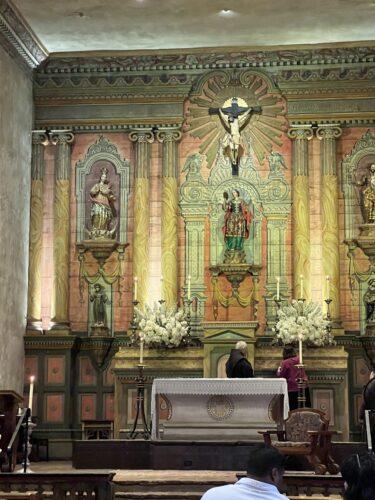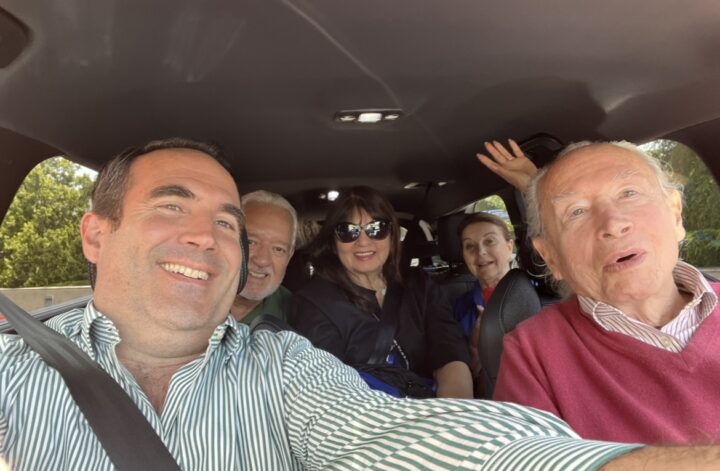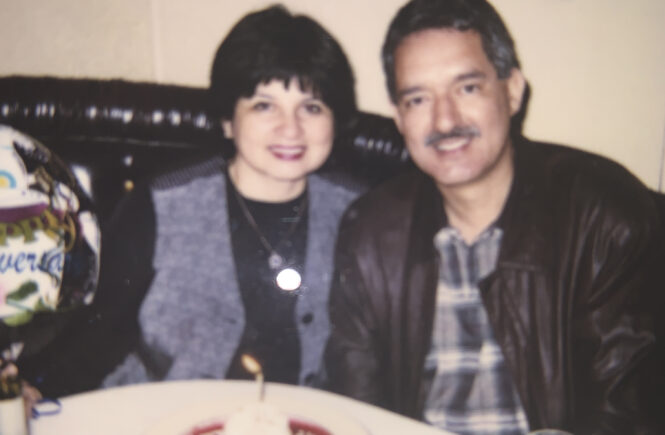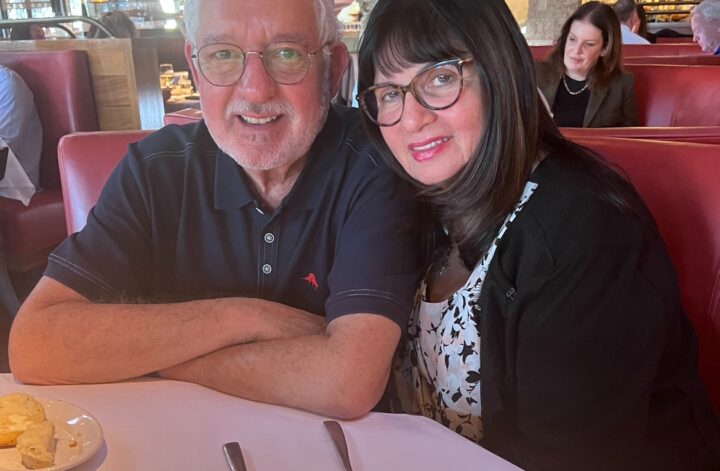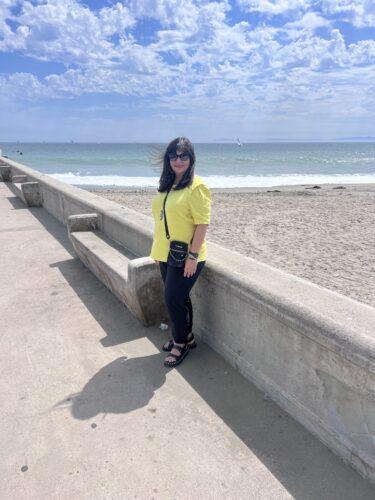
Santa Barbara
We love visiting Santa Barbara. Our roots are deep because both of our children were born there. Though I rarely go into the Pacific Ocean, I love to be near her. The sounds of the crashing waves, the loud seagulls flying overhead are a small part of what this beautiful city has to offer.

God had His hand on Santa Barbara; her beauty beckons for her to be noticed. We walked for miles, frequented our favorite restaurants but it’s the beautiful Pacific Ocean that I love. In late summer, the Pacific keeps her boundaries at bay but lets you know she is in charge. The ocean praises God with each pounding wave.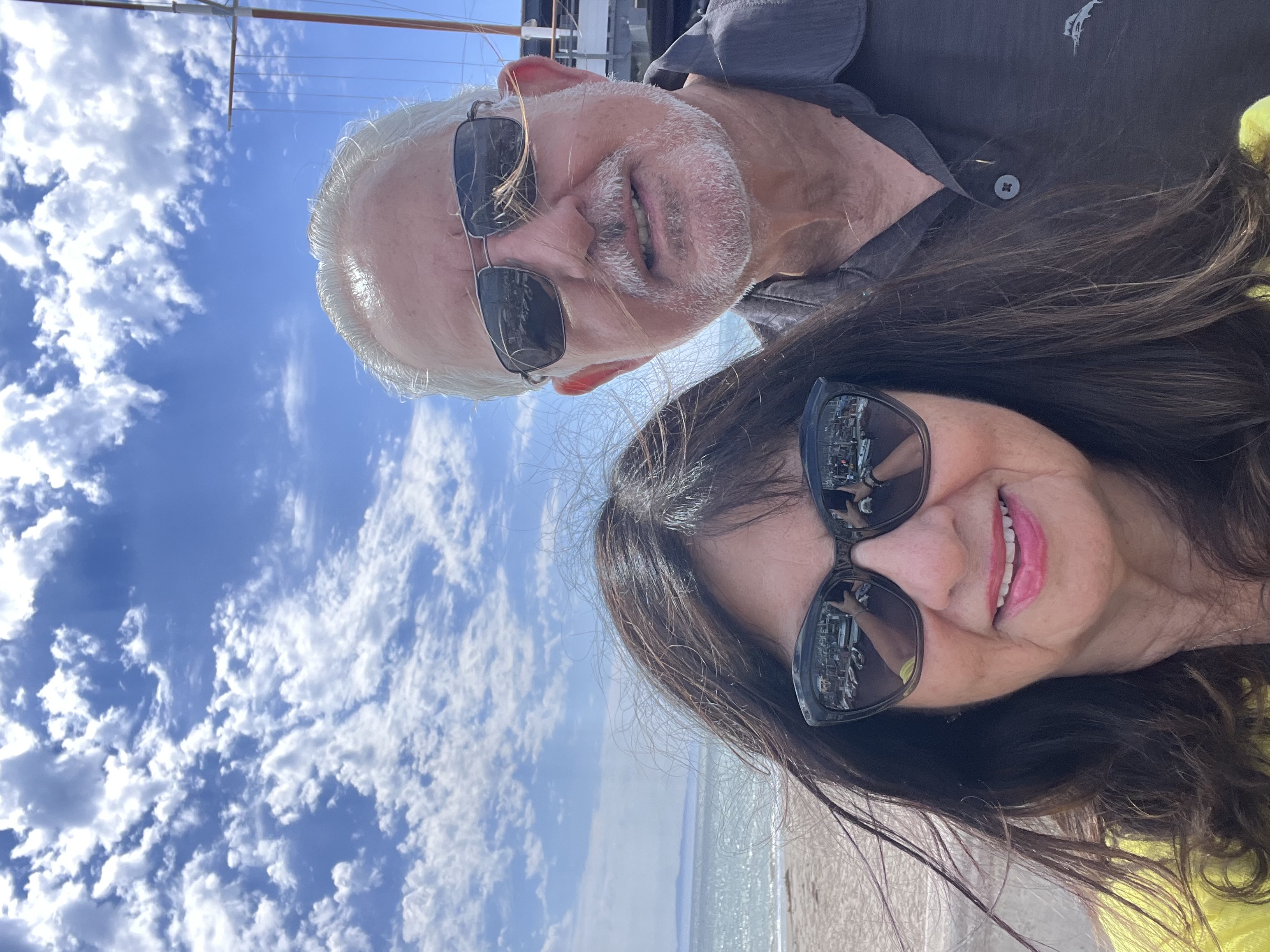
 Who is Saint Barbara?
Who is Saint Barbara?
Saint Barbara was a beautiful young woman whose pagan father kept in a tower to protect her. Then she professed her faith in Christianity. In his outrage, her father had her tortured and he himself beheaded her. On his way home from the execution, her father was struck by lightning and reduced to ashes.
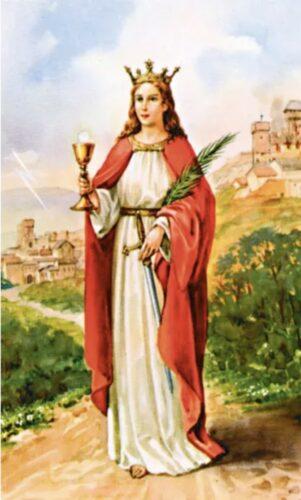
Patron Saint
Saint Barbara is invoked in thunderstorms and is the patron saint of artillerymen, fireman, prisoners and miners.
Junipero Serra
To understand the history of Santa Barbara, California we must talk about Saint Junipero Serra, the Spanish Fray who came to establish the Missions in California.
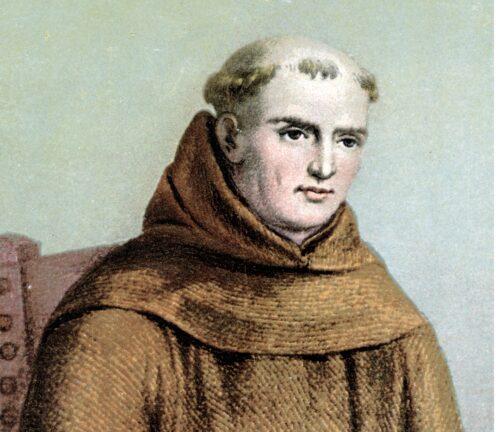
This holy man of God was in charge of overseeing farmland, livestock and infrastructure from San Diego to San Francisco. It’s no surprise that our state owes a lot of our agricultural expertise to the Franciscans.
California Crops
California produces more crops than any other state. There are over 400 types of fruits and vegetables, including nuts. California produces 80% of the worlds almond’s. Almond milk, almond butter and my favorite, Almond Joy candy bars – all developed because the Franciscan padres brought the first almond tree from Spain. In order to celebrate Palm Sunday, the Franciscans planted the first palm trees at the Mission San Diego de Alacala.
Mission Grapes
In order to have Mass the Franciscans needed wine for communion. Catholics will never use anything other than real wine for communion. This has been a practice since the Last Supper. In 1779, Saint Junipero Serra planted California’s first vineyard at Mission San Juan Capistrano.
Mission grapes were also grown by the monks of the Santa Barbara Mission in the hills of Santa Barbara County. The last of the Mission grapes were at the San Gabriel Mission in the San Fernando Valley.
El Camino Real
El Camino Real/The Royal Road was built so that Junipero Serra could travel from San Diego to Carmel and to secure safe passage for travelers. This road also paved a way to reach and convert Native American tribes to Catholicism. Saint Serra used this road to check on the progress of the Missions.
Bad Press
It’s not surprising that Junipero Serra has received bad press these past couple of years because of the protest of Saint Serra’s alleged abuse of Native Americans. This attack is really aimed at the Catholic Church. There is no historical truth to charges that this priest took advantage of the Native Americans. Moreover there is proof that Saint Serra defended the rights of the Native Americans. The Monks and indigenous people learned from each other because both had much to offer. The Catholic Church offered a covering and protection for the indigenous people.
If a lie is repeated often enough, it becomes easy to convince others.
I could never express my disbelief and anger when this saint’s statues were defecated and torn down. The truth will always prevail. Always!.
This is an excerpt written by Archbishop José H. Gomez addressing his concern over the removal of Saint Serra statues:
St. Junípero came not to conquer; he came to be a brother. “We have all come here and remained here for the sole purpose of their well-being and salvation,” he once wrote. “And I believe everyone realizes we love them.” …
St. Junípero was 60 years old when he traveled 2,000 miles from Carmel to Mexico City to protest the injustices of the colonial system and demand that authorities adopt a “bill of rights” that he had written for the native peoples. That was in 1773, three years before America’s founders declared this nation’s independence with those beautiful words: “all men are created equal … endowed by their Creator with certain unalienable rights.”
Mission Santa Barbara
I was not going to miss Mass, so we made plans to attend the 9:00 a.m. service at the Mission. I told Mike we needed to get there early because it was going to be a packed service. He never believes me. As we made the left turn into the parking lot, this Mission always majestically makes a grand appearance. We parked and walked up several steps to be greeted by a Franciscan priest. On our way in I could hear the choir practicing and from the outside it sounded beautiful.
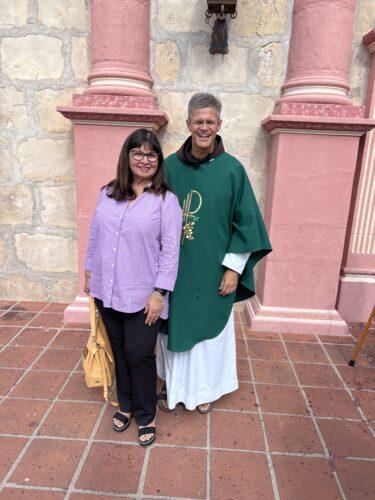
We sat toward the front and Mike was surprised to see the church pews quickly filled. With the opening hymn came the priest and the altar servers; one was carrying the Franciscan San Damiano Cross. The liturgical music quickly filled the atmosphere and I felt as though we were part of this great invitation in welcoming the Holy Spirit.
